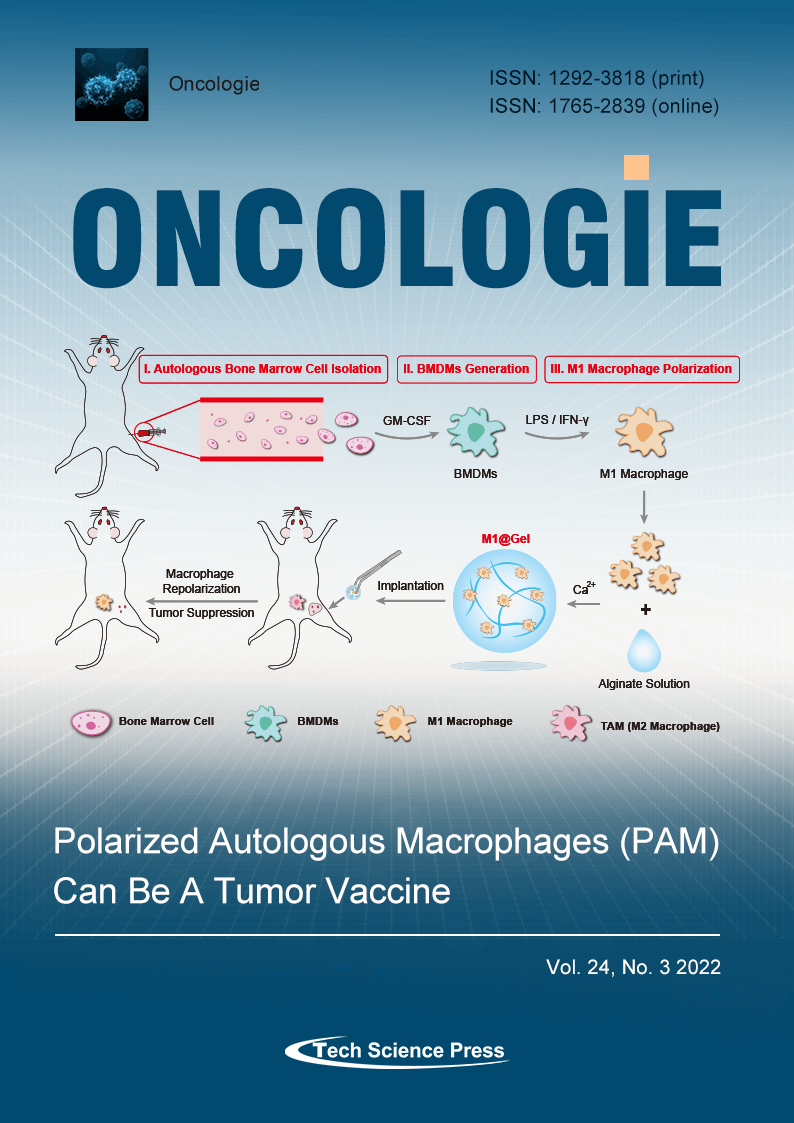Topical Application of Houttuynia cordata Thunb Ethanol Extracts Increases Tumor Infiltrating CD8+ /Treg Cells Ratio and Inhibits Cutaneous Squamous Cell Carcinoma in vivo
Lipeng Gao1,2,#, Rongyin Gui1,#, Xinnan Zheng1, Yingxue Wang1, Yao Gong1, Tim Hua Wang1, Jichuang Wang3, Junyi Huang1,2, Xinhua Liao1,2,*
Oncologie, Vol.24, No.3, pp. 565-577, 2022, DOI:10.32604/oncologie.2022.022454
- 19 September 2022
Abstract Houttuynia cordata Thunb (HCT) is a medicinal and edible herb that has beneficial effects on various diseases due
to its diuretic, anti-inflammatory, anti-oxidative, anti-microbial, anti-viral, anti-cancer and anti-diabetic properties. Most reports of its anti-cancer activity were conducted in vitro, and its effects on cutaneous squamous cell
carcinoma (SCC) have not been investigated yet. Using DMBA/TPA induced SCC mice model, we found that
topical treatment by HCT, as well as its bioactive ingredient monomer, efficiently inhibited tumor growth.
Mechanistically, tumor infiltrating CD4+
, Foxp3+ T regulatory cells (Tregs) were significantly reduced and
CD8+
/Treg cells ratio was largely increased More >
